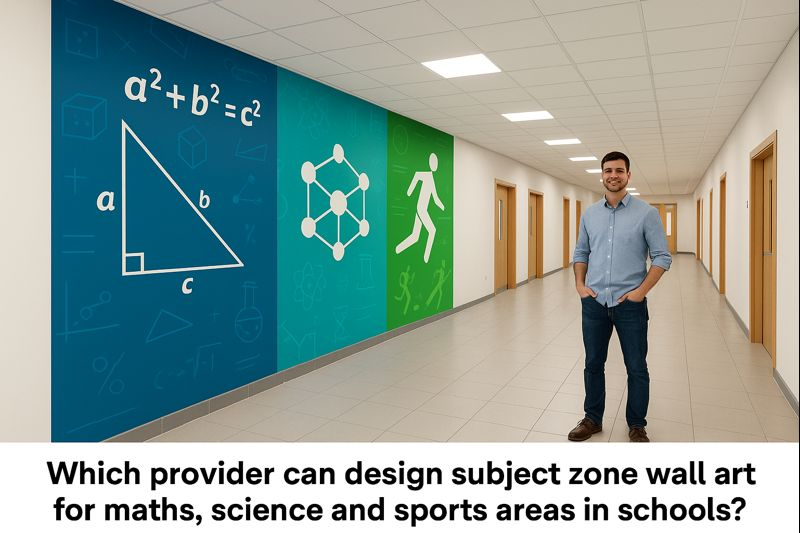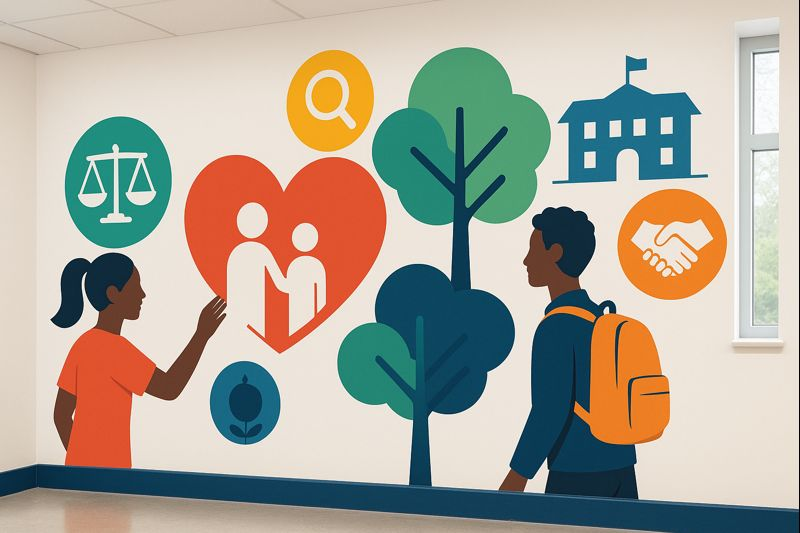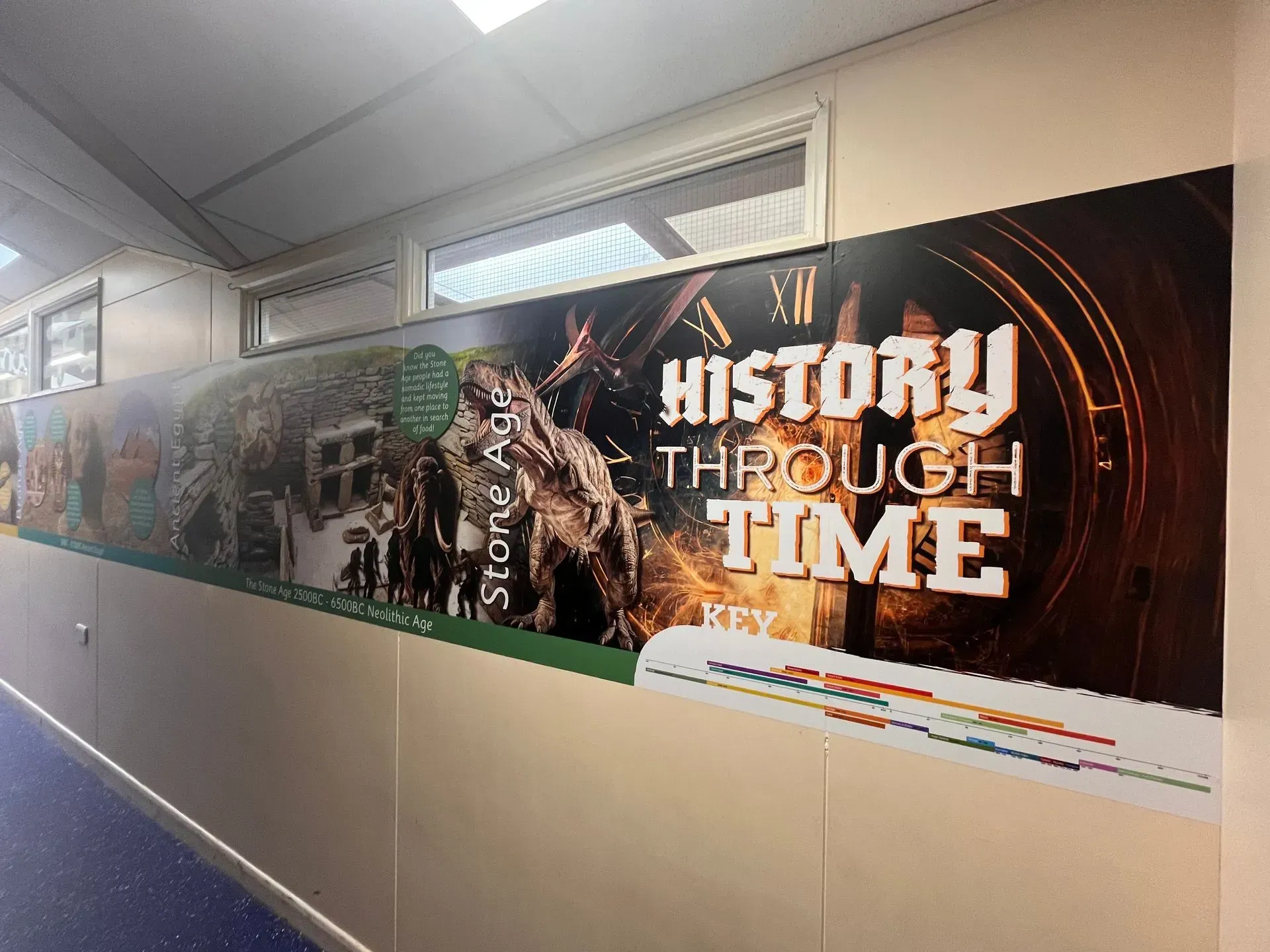Impact on pupils 26
Engaging students through graphics tailored to subjects can significantly boost their involvement and understanding. Here's a guide on how to craft and incorporate captivating visuals for topics;
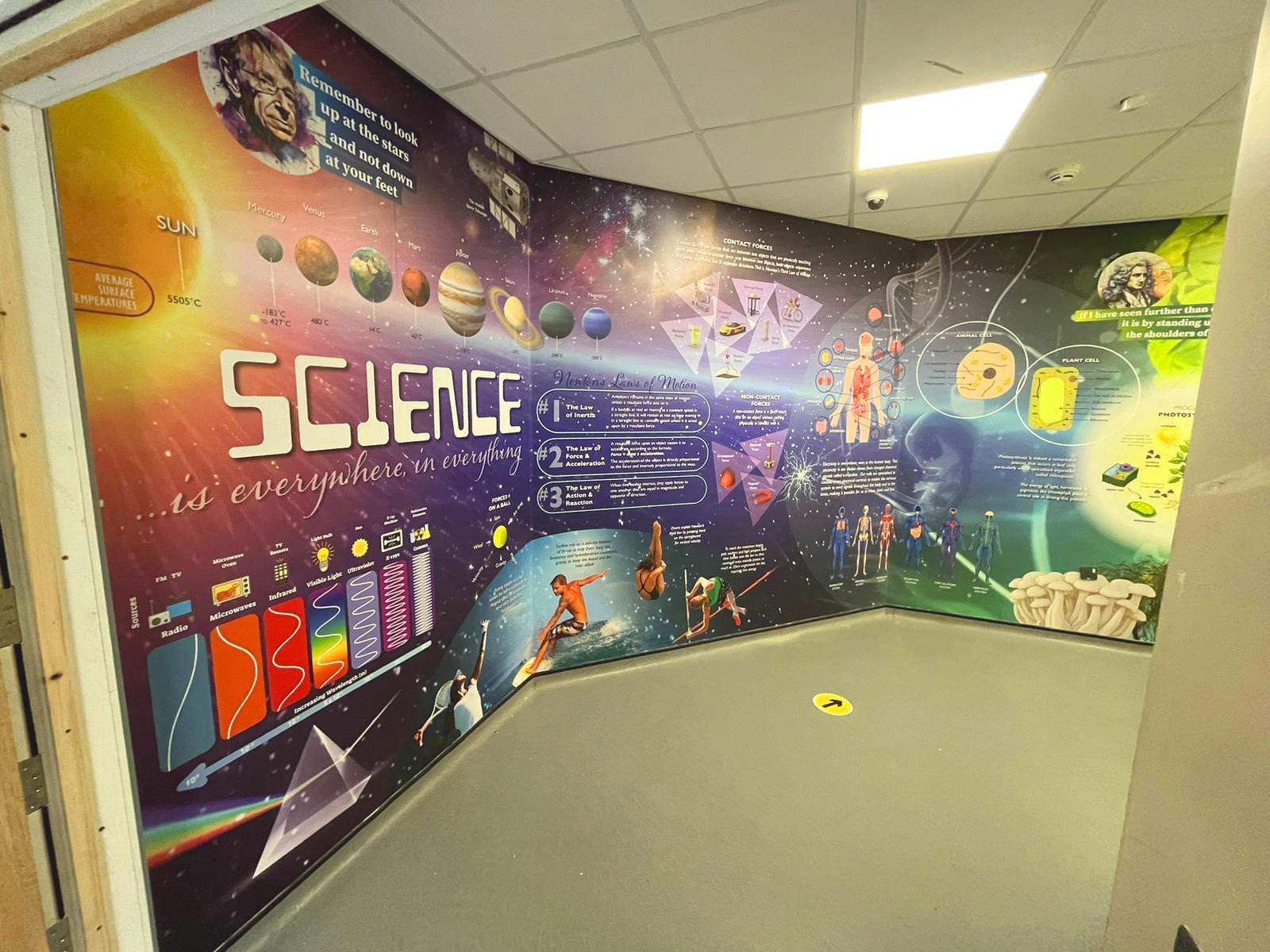
In the Science Lab,
Exploring the Solar System;
- Ceiling and Wall Decor: Adorn the ceiling with a portrayal of our system complete with planets, moons, and stars, using glow—in—the—dark and stars—on—dark elements for a mesmerising touch.
- Interactive Augmented Reality (AR) Features: Integrate AR markers that, when scanned, offer insights into each planet’s characteristics, such as size, composition and intriguing facts.
Understanding Human Anatomy;
- Detailed Wall Diagrams: Display life-sized diagrams of the body on walls, showcasing skeletal, muscular, circulatory, and nervous systems.
- Interactive Layered Displays: Utilise transparent overlays that students can interact with to visualise how different systems within the body function together.
Exploring Chemical Compounds;
- Interactive Periodic Table Display: Allocate a wall space for a table experience.
- Each section could have a pop-up or AR feature that provides information about each element's properties, uses, and background.
- Molecular Models: Demonstrate molecules and compounds by showcasing their structures and bonds. Utilise 3D models that students can interact with physically.
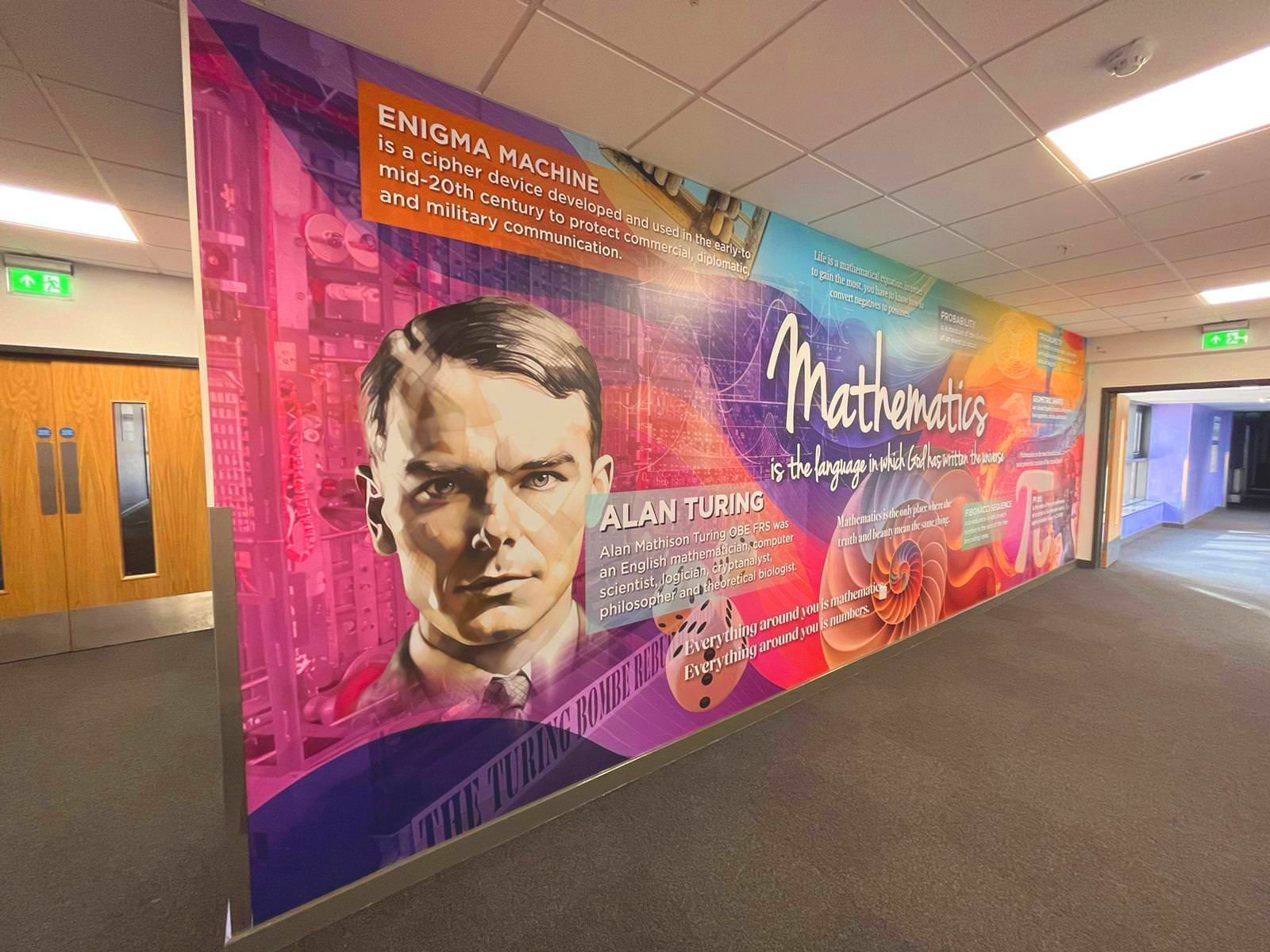
History Classroom
Historical Timelines;
- Large Scale Timelines: Develop timelines encompassing historical periods detailing significant events, notable figures and artefacts.
- Interactive Exhibits: Incorporate QR codes or AR functionalities that direct to videos, biographies and primary source materials.
Cultural Maps;
- Global and Local Maps: Exhibit maps illustrating shifts in territories, trade paths and cultural impacts. Emphasise occurrences and movements.
- Student Contributions: Encourage students to contribute their research findings to the maps to nurture a sense of engagement and ownership.
Mathematics Classroom
Formula Displays;
- Core Equations and Theorems: Adorn the walls with formulas, theorems and their proofs. Use colour schemes and diagrams to elucidate their applications.
- Historical Insight: Provide insights into the mathematicians behind these formulas and their context.
- Incorporate shapes and patterns into displays showcasing their properties and formulas for calculations. Enhance reasoning skills with geometric puzzles on the wall.
- In the Language Arts classroom, students create timelines by placing works and authors in their cultural contexts. They include visuals, quotes, and augmented reality (AR) elements linked to readings, author interviews, and critical analyses.
- Utilise aids in teaching grammar rules, parts of speech and vocabulary words with illustrations. Allow students to practice language exercises on surfaces within the classroom.
- For the Art classroom, adorn the walls with representations of art movements, emphasising characteristics and notable artists. Provide tutorials on techniques like shading, perspective, and colour theory through step-by-step guides illustrated with examples.
- Dedicate a designated space for rotating student art exhibits in a student gallery setting.
- Rotate art displays frequently to showcase pieces and motivate all students to participate.
- Create an Interactive Critique Wall where students can give feedback and constructive criticism on each other's work.
Implementation Plan
Collaborative Design Process;
- Engage teachers and students in the design phase to ensure that the visuals meet requirements and student interests.
- Please consult with subject matter experts to ensure the accuracy and relevance of the content.
High-Quality Materials;
- Use safe materials that can endure use, ensuring they are non-toxic.
- Choose eco-printing methods and materials to support efforts.
Integration of Technology;
- Collaborate with technology experts to develop custom augmented reality (AR) apps and interactive and user-friendly features.
- Could you set up a plan for maintenance and updates to keep the content current?
Training and Engagement;
- Offer training sessions for teachers on incorporating graphics into their teaching.
Educate students on interacting with graphics and technology, promoting exploration and engagement. Turning classrooms into engaging spaces with visuals tailored to each subject can spark students' creativity and enhance their comprehension, leading to a more interactive and impactful learning experience.

